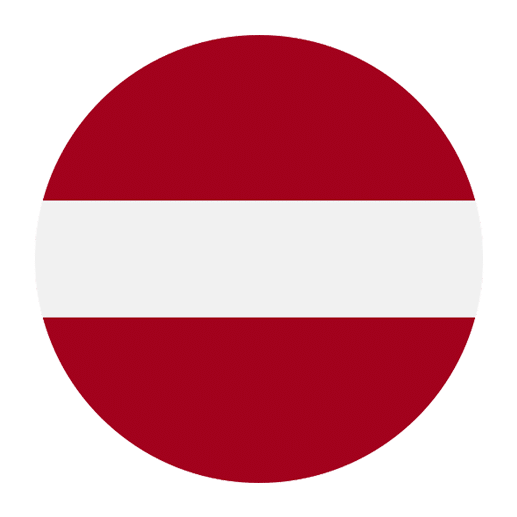Comparative linguistics is a fascinating field that delves into the relationships between languages, examining how they influence each other, their historical connections, and their structural similarities and differences. This article will focus on Latvian and its comparison with other Baltic languages, particularly Lithuanian, as well as the now-extinct Old Prussian language. These languages belong to the Baltic branch of the Indo-European language family and offer rich insights into the dynamics of language evolution, cultural interchange, and linguistic divergence.
The Baltic Language Family
The Baltic languages are a branch of the larger Indo-European family and are traditionally divided into two main groups: East Baltic and West Baltic. The primary representatives of the East Baltic group are Latvian and Lithuanian, while the West Baltic group was represented by Old Prussian, a language that became extinct in the 17th century.
Latvian and Lithuanian: The East Baltic Languages
Latvian and Lithuanian are the only two Baltic languages still spoken today. Both languages share a number of similarities due to their common ancestry, but they also have distinct differences that set them apart.
Phonetics and Phonology
One of the most noticeable differences between Latvian and Lithuanian is in their phonetic and phonological systems. Latvian has undergone more significant phonetic changes compared to Lithuanian. For example, Latvian has a simpler vowel system, with fewer vowel distinctions than Lithuanian.
Latvian has a total of six vowel phonemes: /i/, /e/, /æ/, /ɑ/, /u/, and /o/. Lithuanian, on the other hand, has twelve vowel phonemes, including both short and long versions of each vowel: /i/, /ɪ/, /u/, /ʊ/, /e/, /ɛ/, /o/, /ɔ/, /æ/, /ɑ/, /ɨ/, and /ə/. The greater number of vowel sounds in Lithuanian makes its phonetic system more complex.
In terms of consonants, Latvian has also simplified its system compared to Lithuanian. For instance, Latvian has lost the palatalized consonants that are still present in Lithuanian. Palatalization refers to the softening of consonants, which is a prominent feature in Lithuanian but less so in Latvian.
Grammar and Morphology
When it comes to grammar, both Latvian and Lithuanian are highly inflected languages, meaning that the roles of words in sentences are indicated through changes in their forms rather than by word order alone. However, Latvian has simplified its inflectional system compared to Lithuanian.
For example, Lithuanian nouns are declined in seven cases: nominative, genitive, dative, accusative, instrumental, locative, and vocative. Latvian nouns, on the other hand, are declined in only five cases: nominative, genitive, dative, accusative, and instrumental. The locative and vocative cases have been absorbed into the other cases in Latvian, resulting in a less complex system.
Verb conjugation in Latvian is also somewhat simpler than in Lithuanian. While both languages have a rich system of verb inflections to indicate tense, mood, and aspect, Lithuanian verbs tend to have more forms and irregularities than Latvian verbs.
Vocabulary and Lexicon
The vocabularies of Latvian and Lithuanian share a significant number of cognates, which are words that have a common etymological origin. This is due to their shared ancestry within the Baltic language family. However, there are also many differences in vocabulary due to historical, cultural, and geographical factors.
For instance, Latvian has borrowed extensively from German, Swedish, and Russian due to historical influences, while Lithuanian has been more conservative in retaining its native lexicon. As a result, Latvian has a higher number of loanwords compared to Lithuanian.
An example of this can be seen in the word for “school.” In Latvian, the word is “skola,” which is a borrowing from German “Schule.” In Lithuanian, the word is “mokykla,” which is derived from the native Lithuanian root “mokyti” (to teach).
Old Prussian: The Extinct West Baltic Language
Old Prussian was the third major Baltic language, which belonged to the West Baltic group. Although it became extinct in the 17th century, it offers valuable insights into the early stages of the Baltic language family and its divergence into East and West Baltic branches.
Phonetics and Phonology
Old Prussian had a phonetic system that was distinct from both Latvian and Lithuanian. It had a rich system of vowels and consonants, including several sounds that have been lost in the modern Baltic languages. For example, Old Prussian retained the Proto-Baltic diphthongs that have been simplified in Latvian and Lithuanian.
One notable feature of Old Prussian phonology was the presence of nasal vowels, which are not found in Latvian and Lithuanian. Nasal vowels are vowels that are pronounced with the airflow passing through the nose, similar to the nasal vowels in French.
Grammar and Morphology
The grammatical structure of Old Prussian was also complex, with a rich system of noun declensions and verb conjugations. Like Lithuanian, Old Prussian had seven noun cases, indicating that the simplification seen in Latvian is a more recent development.
Old Prussian also had a well-developed system of verb inflections, with forms to indicate tense, mood, and aspect. The verb system in Old Prussian was likely more complex than in modern Latvian and Lithuanian, reflecting an earlier stage of the Baltic languages.
Vocabulary and Lexicon
The vocabulary of Old Prussian provides valuable evidence for the reconstruction of Proto-Baltic, the hypothetical common ancestor of the Baltic languages. Many Old Prussian words have cognates in both Latvian and Lithuanian, indicating their common origin.
However, Old Prussian also had a number of unique lexical items that do not have direct counterparts in Latvian or Lithuanian. This suggests that the West Baltic branch had developed its own distinct vocabulary, influenced by its geographical and cultural context.
Historical and Cultural Context
The historical and cultural context in which these languages developed has played a significant role in shaping their evolution and divergence. Understanding this context is essential for a comprehensive comparison of Latvian and other Baltic languages.
Historical Influences on Latvian
Latvia’s geographical location has made it a crossroads of various cultural and political influences. Throughout its history, Latvia has been ruled by different powers, including the German Teutonic Knights, Sweden, and Russia. Each of these periods of foreign rule has left its mark on the Latvian language.
The German influence is particularly notable in Latvian, with many German loanwords entering the language during the centuries of German dominance. This has affected not only the vocabulary but also aspects of grammar and syntax.
The Swedish period also left its mark, though to a lesser extent. Some Swedish loanwords can be found in Latvian, particularly in areas related to administration and military terminology.
Russian influence became more pronounced in the 18th and 19th centuries, especially during the period of the Russian Empire and later the Soviet Union. Many Russian loanwords entered Latvian during this time, particularly in areas related to technology, administration, and everyday life.
Historical Influences on Lithuanian
Lithuania’s historical trajectory has been somewhat different from Latvia’s. The Grand Duchy of Lithuania was a powerful state in the medieval period, and this historical legacy has influenced the development of the Lithuanian language.
Lithuania was less affected by German influence compared to Latvia, which is reflected in its more conservative vocabulary. However, Polish influence became significant during the time of the Polish-Lithuanian Commonwealth. Many Polish loanwords entered Lithuanian during this period, particularly in areas related to culture, religion, and administration.
Russian influence also affected Lithuanian, particularly during the period of the Russian Empire and the Soviet Union. However, the impact of Russian on Lithuanian was somewhat less pronounced compared to Latvian, partly due to Lithuania’s strong national identity and efforts to preserve its language.
Historical Influences on Old Prussian
Old Prussian’s historical context is marked by the eventual extinction of the language due to the Germanization of the Prussian people. The Teutonic Knights, a German military order, conquered the Prussian territories in the 13th century, leading to the gradual assimilation of the Prussian people and their language.
The German influence on Old Prussian was significant, leading to the adoption of many German loanwords. Over time, the Prussian people became German-speaking, and Old Prussian ceased to be spoken by the 17th century.
Comparative Linguistics and Language Preservation
The study of comparative linguistics is not only about understanding the similarities and differences between languages but also about preserving linguistic heritage. The Baltic languages, with their rich history and unique features, offer valuable insights into the broader Indo-European family and the processes of language change and preservation.
Preserving Latvian and Lithuanian
Both Latvian and Lithuanian have undergone periods of suppression and revival. Efforts to preserve and promote these languages have been crucial in maintaining their vitality.
In Latvia, the Latvian language experienced a revival in the 19th century with the Latvian National Awakening, a cultural and national movement that sought to promote Latvian identity and language. This period saw the standardization of the Latvian language and the development of a Latvian literary tradition.
In Lithuania, the Lithuanian language also experienced a revival in the 19th century with the Lithuanian National Revival. Efforts to standardize the language, develop a literary tradition, and promote Lithuanian identity were central to this movement.
Both languages faced challenges during the Soviet period, with policies that promoted Russian as the dominant language. However, since the restoration of independence in the early 1990s, both Latvia and Lithuania have made significant efforts to promote and preserve their national languages.
Reviving Old Prussian
The revival of Old Prussian is a more challenging task, given that the language became extinct in the 17th century. However, there are efforts to reconstruct and revive the language based on historical texts and comparative linguistic analysis.
Linguists and enthusiasts have been working to reconstruct Old Prussian grammar, vocabulary, and pronunciation. These efforts are not only about reviving a lost language but also about preserving the cultural heritage of the Prussian people.
Conclusion
The comparative study of Latvian and other Baltic languages, particularly Lithuanian and Old Prussian, offers valuable insights into the dynamics of language evolution, cultural interchange, and linguistic divergence. While Latvian and Lithuanian share a common ancestry and many similarities, their unique historical and cultural contexts have shaped their distinct features. The extinct Old Prussian language provides a window into the early stages of the Baltic language family and its divergence into East and West Baltic branches.
Understanding these languages in their historical and cultural context is essential for appreciating their uniqueness and preserving their linguistic heritage. Efforts to promote and preserve Latvian, Lithuanian, and even revive Old Prussian are crucial in maintaining the rich linguistic diversity of the Baltic region and the broader Indo-European family.

